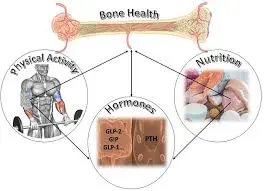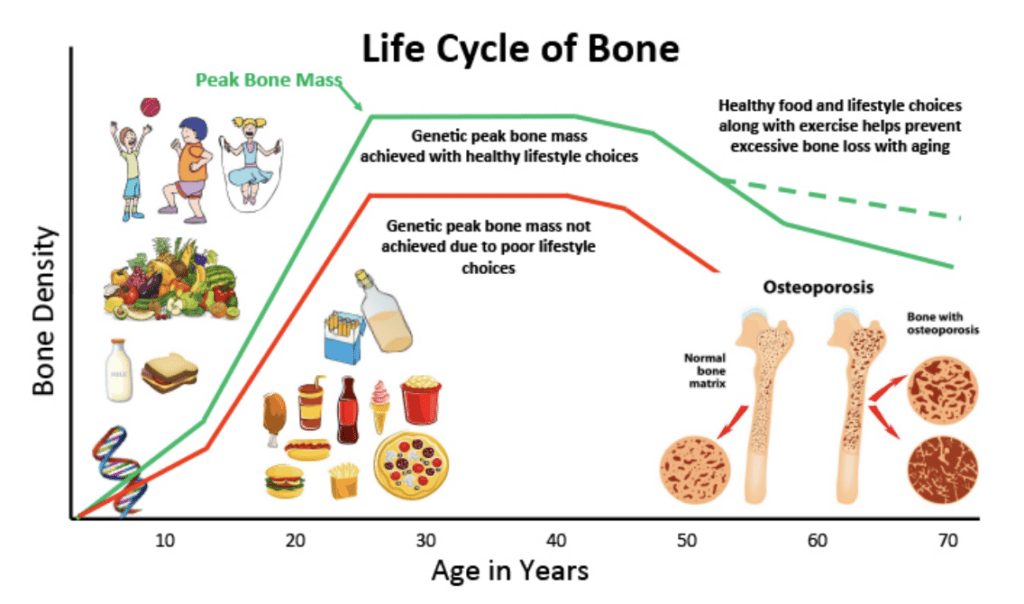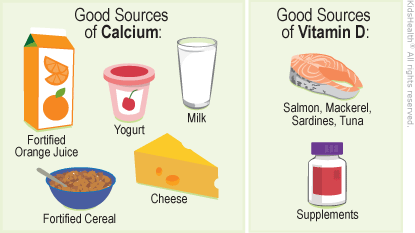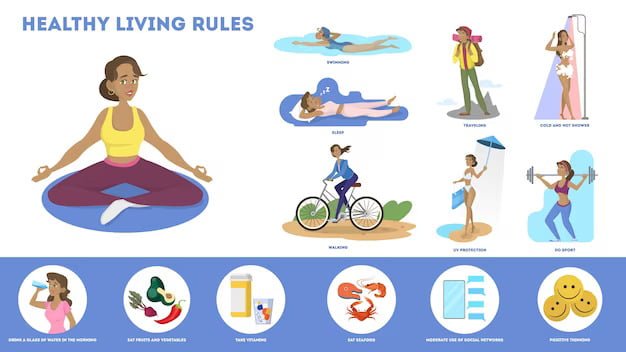It is extremely necessary to ensure that bone health among children and teenager is maintained because it forms the base for their lifelong skeletal strength and elasticity. Bone development during growth is a complex process that involves many different factors, which are critical for parents, caretakers and educators to comprehend. This in-depth guidebook explores various dimensions of bone health in children as well as providing invaluable insights, practical tips and actionable strategies necessary for ensuring optimal skeletal well-being.
The Significance Of Bone Health In Children
The explanation of this will be that bones serve as the body’s supporting framework thus offering mobility and protection. Bones are vital organs that store minerals, produce blood cells, and regulate hormones apart from its mechanical roles. During growth spurts in childhood and adolescence size and density both increase dramatically leading to rapid development of bones. It is an opportune period known as “the window of opportunity” when the majority of peak bone mass is attained before early adulthood kicks in.

When one reaches peak bone mass in childhood, this ensures that there’s still enough bones strength and density in old age. This study has shown that those who attain higher peak bone mass during the adolescent stage are not as affected by osteoporosis and fractures when they become adults. Consequently, good bone health in childhood provides a foundation for strong skeleton throughout the life span and reduces the chances of getting debilitating bone disease.
Causes of Poor Bone Health
Nutrition
Adequate nutrition is crucial to support appropriate growth and maintenance of bones. Calcium is the principal mineral component of bones needed for their formation, while vitamin D helps it utilize calcium. Therefore, making sure children have enough intake of calcium and vitamin D is vital for ensuring strong healthy bones.
Calcium-rich food includes milk, cheese, yogurt among dairy products while green vegetables such as broccoli, spinach and kale are also rich sources of dietary calcium. Further food options include fortified breakfast cereals as well as orange juice which could be taken to meet daily requirements of calcium. Nevertheless, caffeine or excessive salt can hamper calcium absorption from foods consumed strictly within limited time periods only.

Vitamin D is a nutrient produced by the skin when it is exposed to sunlight. However, location, time of the year, application of sunscreens and pigmentation of the skin can influence its synthesis process. Therefore, dietary supplements could be required especially in winter months or during periods with less sunshine; thus vitamin D could be sourced from such foods as fatty fish like mackerel, salmon, egg yolks, fortified products and supplements.
Physical Activity
Regular physical activity is crucial for bone health as it promotes bone remodeling and improves bone strength. Muscle exercises that work against gravity e.g., weight-bearing ones are especially beneficial for bone growth. Walking, running, jumping, dancing and resistance training all fall under this category.
Including different types of weight-bearing activities in children’s daily lives leads to increased rates of osteogenesis through loading developing bones which eventually enhances bone mass and density. In addition to this activities like jumping as well skipping should be done in order to increase the rate at which bones form; hence improving their structure. This will not only result in good skeletal health but also overall wellbeing if children are encouraged to spend about an hour on moderate-to-vigorous intensity physical activity daily.
Factors in lifestyle
Children’s bone health can be affected by many things, including sleep patterns, screen time and exposure to toxic substances. Giving priority to getting enough sleep is vital since sleep deprivation may lead to hormonal imbalances and poor bone metabolism. For children’s optimal growth and development, make sure that they sleep for the recommended durations based on their age as specified by their doctors.
Excess screen time entails long sedentary hours and decreased physical activity which are detrimental to bone health. Support outdoor play, participation in sports and other activities that encourage movement such as weight bearing exercises. In order for children not to become physically inactive or uninvolved with their surroundings, limit time spent on screens throughout the day to a maximum of two hours while prioritizing active playtime.
Furthermore, some substances are harmful to bones. First-hand or second-hand tobacco smoke exposes one to low bone mass density and higher probability of fractures occurring . Similarly,taking too much alcohol during adolescence may interfere with calcium metabolism resulting in impaired bone formation. Therefore, children should know about dangers associated with use of tobacco products or alcohol at an early stage so that they can make right decisions about healthy living.
Common Issues with Bone Health in Childhood
Even though many efforts have been made to promote better bone health, children still face various bone-related challenges calling for attention and intervention. Early recognition and proactive management of pediatric bone health can only be understood through familiarization with common concerns.
Lack of vitamin D
Vitamin D deficiency continues to be a widespread issue among children globally, especially in areas with low or no sunlight due to pollution. Lack of enough vitamin D in the body may interfere with efficient calcium absorption which intern cause poor bones mineralization and skeletal deformities.

Some factors that lead to lack of vitamin D are little exposure to direct sunshine, wrong food choices and specific medical problems that hinder the metabolism of the same vitamin. Children at risk for Vitamin D deficiency are individuals with darker skin coloration or those who are not exposed to outdoor activities especially breastfeeding without vitamin D supplementation.
It is essential to recognize early on signs and symptoms of vitamin D deficiency such as bone pain, muscle weakness and stunted growth to ensure timely detection and intervention. Adequate screening for vitamin D levels as well as appropriate supplementation under the supervision of healthcare professionals can help eliminate deficiency and ensure children’s bones grow optimally.
Broken Bones
Childhood fractures and injuries are frequent occurrences, often resulting from falls, sports-related accidents, or recreational activities. The majority of these childhood fractures resolve without any complications; however, some serious injuries or fractures that involve the growth plates may need special care and treatment.
Preventing Fractures
This can be done by implementing safety measures while promoting responsible behavior during physical activities. For instance, have your child wear protective sport gear like helmet or wrist guards when involved in any sports activity or other entertainment programs. Additionally, stress the significance of appropriateness technique plus supervision so as to reduce chances of accidents occurring thereby leading to injuries.
Prompt treatment and evaluation of fractures is very important for ensuring that they heal the best possible way and preventing future complications. Suspect fracture or injury should be treated by medical practitioners as soon as possible and follow the advice given by healthcare provider regarding immobilization, rehabilitation, and return to activity.
Bone Development Disorders
Bone development can be affected by some medical conditions as well as genetic disorders leading to skeletal abnormalities in children. e.g rickets characterized by soft weak bones caused by deficiency of vitamin D, osteogenesis imperfecta characterized by brittle bones and multiple fractures are some of them.
To initiate appropriate therapeutic interventions that provide support, timely identification and diagnosis of bone development disorders is crucial. In order to confirm the root cause of the problem and develop management strategies this may necessitate diagnostic assessments such as laboratory tests, imaging studies including X-rays bone scans or even gene testing.
Children who have bone disorders need multidisciplinary care involving pediatricians, endocrinologists, orthopedic surgeons among other health care providers. Nutritional supplementation treatment strategies may include growth hormones therapy, orthopedic interventions; caring for their welfare so that outcomes can be improved while enhancing quality of life.
Practical Suggestions to Help Promote Good Bone Health in Parents

Parents need to be empowered with practical strategies and actionable tips for promoting bone health among children and adolescents. Through incorporating evidence-based recommendations into everyday routines, parents can create an environment that supports optimal skeletal development as well as overall well-being.
Encourage a Healthy Eating Habit
For children, nutrient-rich foods are crucial in supporting bone health and overall growth. Participating in a balanced diet that includes all the food groups is encouraged with more focus being on calcium rich foods, those rich in vitamin D and other vital nutrients.
Calcium-Rich Foods:
- Products from animals such as milk, yogurt, cheese
- Various leafy greens like kale, spinach, collard greens
- Fortified foods which include orange juice
- Calcium fortified tofu products or plant-based milk alternatives
Sources of Vitamin D:
- Oily fish like mackerel, salmon and tuna
- Egg yolks
- Foods fortified including juices (orange juice), cereals (milk)
- Dietary supplements like vitamin D3.
To ensure adequate intake and absorption of calcium and vitamin D-enriched nourishments they ought to be included in meals and snacks at different times of day. For personalized dietary recommendations tailored to your child’s individual needs it may be helpful to consult with a registered dietitian or pediatric nutritionist.
Foster an Active Lifestyle

The body of a child immensely needs exercise for its bone, muscles, and overall fitness. Encourage children to participate in regular activities that are age-appropriate which encourage coordination, mobility and development of muscles. Strive to create the right ratio between aerobics, workouts targeting strength building and elasticity that promotes all inclusive growth.
Weight-Bearing Exercises:
- Strolling
- Sprinting
- Skipping a rope
- Dancing
- Gymnastics
- Games (soccer, basketball, volleyball)
- Martial arts (karate, taekwondo)
Encouraging the open-air games and recreational activities will help to promote unstructured game play where there is less emphasis on rules and more focus is placed on physical movement. Sedentary behaviors like excessive screen time or prolonged sitting should be discouraged whereas more active family playtime should be given priority.
Establish Healthy Habits
Having an environment that nurtures wellness as well as health can go along way towards establishing permanent behavior patterns. Act as a role model showing your children how to lead healthy lives by having consistent routines promoting good sleep habits, adequate hydration and effective stress management strategies.
Sleep Hygiene:
- Stick To A Schedule
- Create A Sleep-Inducing Nighttime Routine:
- Make Sure The Sleep Environment Is Restful And Relaxing:
- Avoid Stimulants And Electronic Devices At Bedtime
Hydration:
- Regularly remind children to drink water throughout the day.
- Give them water whenever possible as a drink.
- Avoid excessive consumption of soft drinks and caffeinated drinks
Stress Management:
- Train children how to handle tension and stress
- Encourage relaxation methods such as deep breathing or mindfulness
- Promote mutual understanding and provide emotional support.
If parents prioritize healthy habits while ensuring that the environment is conducive, their children will be able to make positive choices towards their well-being in general.
Promote Sun Safety
Though sunlight is a natural source of vitamin D, it is important to balance sun exposure with sun protection so as not to get skin damage and sunburn. Use protective measures against UV rays and carry out safe practices for optimizing vitamin D production.
Sun Safety Tips:
- Restrict outdoor activities between 10am and 4pm when sunlight is strongest.
- In case you are outside on a sunny day, stay under shade.
- Wear hats, sunglasses, and loose-fitting clothes that cover your body including arms and legs.
- Lubricate any exposed parts with at least SPF 30 sunscreen every two hours or after swimming or excessive sweating.
- Swimming outdoors requires children to wear protective swimwear-like rash guards.
Maintaining optimal bone health and preventing skin damage from the sun requires a careful balance between sun safety practices and vitamin D synthesis.
Routine Monitoring of Bone Health
Regular monitoring of bone health is important in detecting early signs of problems and initiating appropriate interventions. Prepare and implement a comprehensive monitoring plan for your child’s pediatrician or healthcare provider to follow.

Visits to Pediatricians
These are opportunities for the healthcare providers to conduct growth assessment, development as well as general wellness including bone health parameters. Consult environmental experts on guidelines of these visits, occasionally give regular checkups, therefore raising matters relating to possible baby bone issues during appointments.
Bone Health Assessment
Pediatricians can test children’s bones’ strength using various methods. These could include:
- Height and weight that tracks growth trends and identifies malnutrition
- Developmental screening that detects late progress or abnormalities in skeletal structure
- Dietary survey that checks nutrient levels especially calcium and vitamin D
- Musculoskeletal examinations which check conditions where the bones are involved
- To measure vitamin D levels in the blood and assess bone metabolism, one can use laboratory tests.
Make sure that you discuss with your child’s health professional about bone health and campaign for comprehensive evaluations as required to guarantee optimum skeletal fitness.
Conclusion
When you invest in your child’s skeletal well-being, you are investing in their general health and future quality of life. By being aware of factors affecting bone formation and using evidence-based approaches to enhance skeletal health, parents can help their children prosper fully.
Parents can promote ideal bone strength and adaptability by appropriate diets, regular physical activity, sun protective measures as well as favorable lifestyles. Parents should prioritize routine monitoring of their bones so that they detect any problems early enough thereby preventing them from lasting longer into adulthood.
10 Effective Parenting Techniques to Nurture Healthy Child Development
